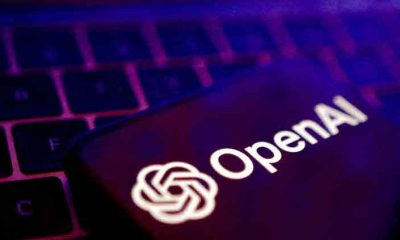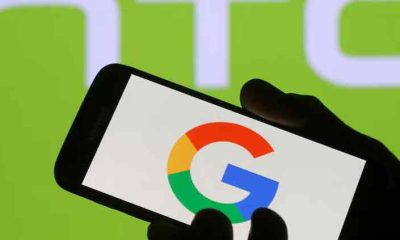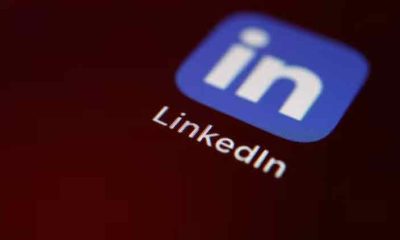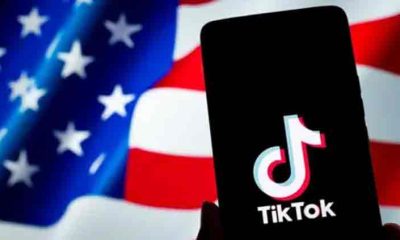Tech
Elon Musk’s mysterious ways on display in Tesla tweet trial

Elon Musk’s enigmatic personality and unconventional tactics are emerging as key exhibits in a trial revolving around one of his most polarizing pursuits — tweeting.
The trial, centered on a pair of tweets announcing Musk had obtained the money to take Tesla private in 2018, reeled the 51-year-old billionaire into a federal courtroom in San Francisco for three days of testimony that opened a peephole into his often inscrutable mind.
Musk, who now owns the Twitter service that he deploys as his megaphone, was often a study in contrasts during his roughly eight hours on the stand. The CEO of the electric carmaker is facing a class-action lawsuit filed on behalf of Tesla shareholders after Musk tweeted about a company buyout that didn’t happen.
Through both his testimony and the evidence submitted around it, Musk came across as impetuous, brash, combative and contemptuous of anyone who questioned his motives as a game-changing entrepreneur who has inspired comparisons to Apple’s late co-founder, Steve Jobs.
At other times, Musk sounded like the savvy visionary that his supporters hail him to be — an intrepid rebel who by his own estimates has raised more than $100 billion from investors. They have been richly rewarded by his leadership of pioneering companies that include PayPal in digital payments, Tesla in electric vehicles and SpaceX in rocket ships.
“It is relatively easy for me to get investment support because my track record is extremely good,” Musk wryly observed.
But his confidence in his ability to get the money he wants to pursue his plans is one reason he found himself in court. The three-week trial is set to resume Tuesday and head for jury deliberations by Friday.
Here’s what to know so far:
PLANTING THE SEEDS
Evidence and testimony have shown Musk had started to mull taking Tesla private in 2017 so he wouldn’t have to hassle with the headaches and distractions that accompany running a publicly traded company.
After a July 31, 2018, meeting with a top representative from Saudi Arabia’s sovereign wealth fund, Musk sent a letter to Tesla’s board outlining why he wanted to take the automaker private at a price of $420 per share — about 20% above its stock price at the time.
Musk was serious enough that he had already discussed the pros and cons with Michael Dell, who had gone through the public-to-private transition in 2013 when he led a $25 billion buyout of the personal computer company bearing his name, according to trial evidence.
THE TROUBLESOME TWEETS
The crux of the case hinges on an Aug. 7, 2018, tweet in which Musk declared “funding secured” to take Tesla private. Musk abruptly posted the tweet minutes before boarding his private jet after being alerted that the Financial Times was about to publish a story that Saudi Arabia’s Public Investment Fund had spent about $2 billion buying a 5% stake in Tesla to diversify its interests beyond oil, according to his testimony.
Amid widespread confusion about whether Musk’s Twitter account had been hacked or he was joking, Musk followed up a few hours later with another tweet suggesting a deal was imminent.
Musk defended the initial tweet as a well-intentioned move to ensure all Tesla investors knew the automaker might be on its way to ending its then-eight-year run as a publicly held company.
“I had no ill motive,” Musk testified. “My intent was to do the right thing for all shareholders.”
Guhan Subramanian, a Harvard University business and law professor hired as an expert for shareholder lawyers, derided Musk’s method for announcing a potential buyout as an “extreme outlier” fraught with potential conflicts.
“The risk is that Mr. Musk timed his announcement of his (management buyout) proposal to serve his own interests rather then the interests of the company,” Subramanian testified.
WHERE’S THE MONEY?
There’s another issue threatening to undermine Musk’s defense. He hadn’t locked up the financing for his proposed deal or even pinned down down how much would be needed to pull it off, based on testimony from Musk, other witnesses and other evidence.
That is one reason U.S. District Judge Edward Chen had decided last year that Musk’s 2018 tweets were false and has instructed the jury to view them that way.
It also prompted regulators to allege Musk misled investors with the tweets, resulting in a $40 million settlement with the U.S. Securities and Exchange Commission that also required Musk to step down as Tesla’s chairman.
Chen ruled that the 2018 settlement, in which Musk didn’t acknowledge wrongdoing and has since lamented making, can’t be mentioned to the jury.
Musk testified that he believed he had secured an oral commitment to provide wherever money was needed for a Tesla buyout during a July 31, 2018, face-to-face meeting with Yasir al-Rumayyan, governor of Saudi Arabia’s wealth fund.
That was reinforced in testimony from Tesla’s former chief financial officer, Deepak Ahuja, who was at the discussions and took al-Rumayyan on a half-hour tour of a Tesla factory.
But a text message al-Rumayyan sent to Musk after the “funding secured” tweets made it appear that the discussions about the Saudi fund financing a private buyout were preliminary.
“I would like to listen to your plan Elon and what are the financial calculations to take it,” al-Rumayyan wrote to Musk, according to a copy submitted as evidence in the trial.
Musk framed al-Rumayyan’s text as an attempt to backpedal from his previous commitment. He also insisted the Saudi fund had given an “unequivocal commitment” to financing the buyout.
MONEY MANEUVERING
After his 2018 tweets, Musk tried to get the money needed for the Tesla buyout with the help of Egon Durban, co-CEO of the private equity firm Silver Lake, which helped finance the Dell buyout in 2013. Musk also enlisted Dan Dees, a top executive with Goldman Sachs, an investment banking firm that had worked closely with Tesla.
In testimony, both Durban and Dees discussed efforts to raise money for a Tesla buyout for a wide range of potential investors that included two Chinese companies, Alibaba and Tencent, as well as Google in documents initially code-named “Project Turbo,” then “Project Titanium.”
The buyout would have required anywhere from $20 billion to $70 billion, according to the documents — funding that never came close to getting raised, Durban and Dees both testified, largely because Musk scrapped the proposal to take Tesla private on Aug. 24, 2018, after consulting with shareholders.
Tesla’s shares are now worth eight times what they were then, after adjusting for two stock splits.
Musk still contends he could have gotten the money had he wanted and, even if there was a shortfall, he could have covered any gap by selling some of his stock in privately held SpaceX. That is a strategy Musk used in his $44 billion purchase of Twitter, except he sold about $23 billion of his stock in Tesla.
Durban and Dees both testified that they had no doubt the money for a buyout could have been raised — echoed by former Tesla director Antonio Gracias.
“He is the Michael Jordan of fundraising,” Gracias testified.
Tech
OpenAI, SoftBank each commit 19bn dollars to Stargate AI data center

OpenAI and Japanese conglomerate SoftBank (9984.T) will each commit $19 billion to fund Stargate, a joint venture to develop data centers for artificial intelligence in the U.S., the Information reported on Wednesday.
The ChatGPT maker will hold a 40% interest in Stargate, and would act as an extension of OpenAI, the report said, citing OpenAI CEO Sam Altman speaking to colleagues. His comments imply SoftBank would also have a 40% interest, the report added.
OpenAI and SoftBank did not immediately respond to Reuters’ requests for comment.
On Tuesday, U.S. President Donald Trump announced that OpenAI, SoftBank Group and Oracle (ORCL.N) will unveil Stargate and invest $500 billion over the next four years to help the United States stay ahead of China and other rivals in the global AI race.
Stargate will initially deploy $100 billion and the rest of the funding is expected over the next four years. The project is being led by SoftBank and OpenAI.
Tech
Taiwan’s HTC to sell part of XR unit to Google for 250mn dollars

Taiwan’s HTC (2498.TW) said on Thursday it will sell part of its unit for extended reality (XR) headsets and glasses to Google (GOOGL.O) for $250 million and transfer some of its employees to the U.S. company.
The transaction is expected to close in the first quarter of this year, HTC said.
The two companies will also explore further collaboration opportunities, HTC added.
Google said in a separate statement that the deal will accelerate the development of the Android XR platform and strengthen the ecosystem for headsets and glasses.
Lu Chia-te, HTC vice president and general counsel, told reporters the company had granted its intellectual property rights to Google as a non-exclusive license.
“Therefore, this is not a buyout nor an exclusive licence. In the future, HTC will still retain the ability to use, utilise, and even further develop it without any restrictions,” he said.
Tech
Microsoft’s LinkedIn sued for disclosing customer information to train AI models

Microsoft’s (MSFT.O) LinkedIn has been sued by Premium customers who said the business-focused social media platform disclosed their private messages to third parties without permission to train generative artificial intelligence models.
According to a proposed class action filed on Tuesday night on behalf of millions of LinkedIn Premium customers, LinkedIn quietly introduced a privacy setting last August that let users enable or disable the sharing of their personal data.
Customers said LinkedIn then discreetly updated its privacy policy on Sept. 18 to say data could be used to train AI models, and in a “frequently asked questions” hyperlink said opting out “does not affect training that has already taken place.”
This attempt to “cover its tracks” suggests LinkedIn was fully aware it violated customers’ privacy and its promise to use personal data only to support and improve its platform, in order to minimize public scrutiny and legal fallout, the complaint said.
The lawsuit was filed in the San Jose, California, federal court on behalf of LinkedIn Premium customers who sent or received InMail messages, and whose private information was disclosed to third parties for AI training before Sept. 18.
It seeks unspecified damages for breach of contract and violations of California’s unfair competition law, and $1,000 per person for violations of the federal Stored Communications Act.
A lawyer for Prince Harry on Wednesday said the Duke of Sussex had reached a settlement with Rupert Murdoch’s news conglomerate.
LinkedIn said in a statement: “These are false claims with no merit.”
A lawyer for the plaintiffs had no immediate additional comment.
The lawsuit was filed several hours after U.S. President Donald Trump announced a joint venture among Microsoft-backed OpenAI, Oracle (ORCL.N) and SoftBank (9984.T), with a potential $500 billion of investment, to build AI infrastructure in the United States.
-
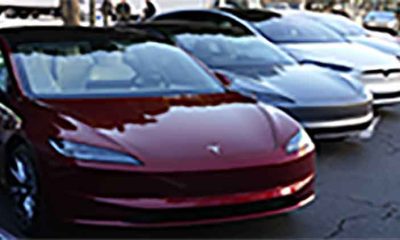
 Business2 months ago
Business2 months agoAuto industry’s shift toward EVs is expected to go on despite Trump threat to kill tax credits
-

 Entertainment3 months ago
Entertainment3 months agoBeyoncé leads the 2025 Grammy noms, becoming the most nominated artist in the show’s history
-

 pakistan3 months ago
pakistan3 months agoPM Shehbaz terms promotion of foreign investment as top priority
-
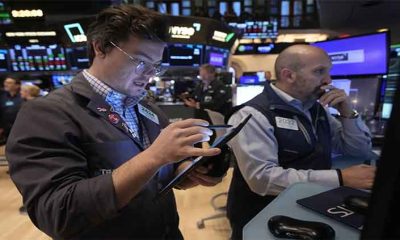
 Business3 months ago
Business3 months agoWall Street cruises toward the close of its best week in a year
-

 World2 months ago
World2 months agoSix Israeli troops killed, deadly strikes in Lebanon
-

 Entertainment2 months ago
Entertainment2 months agoMovie Review: ‘Red One’ tries to supersize the Christmas movie
-
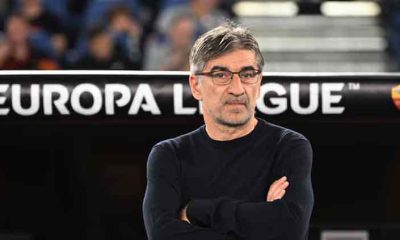
 Sports1 month ago
Sports1 month agoSouthampton set to sign Juric as new manager
-
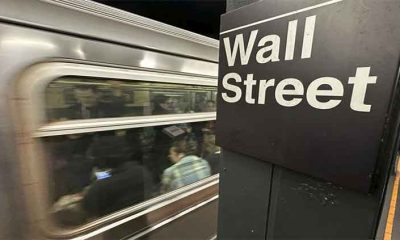
 Business2 months ago
Business2 months agoWall Street gains ground as it notches a winning week and another Dow record

